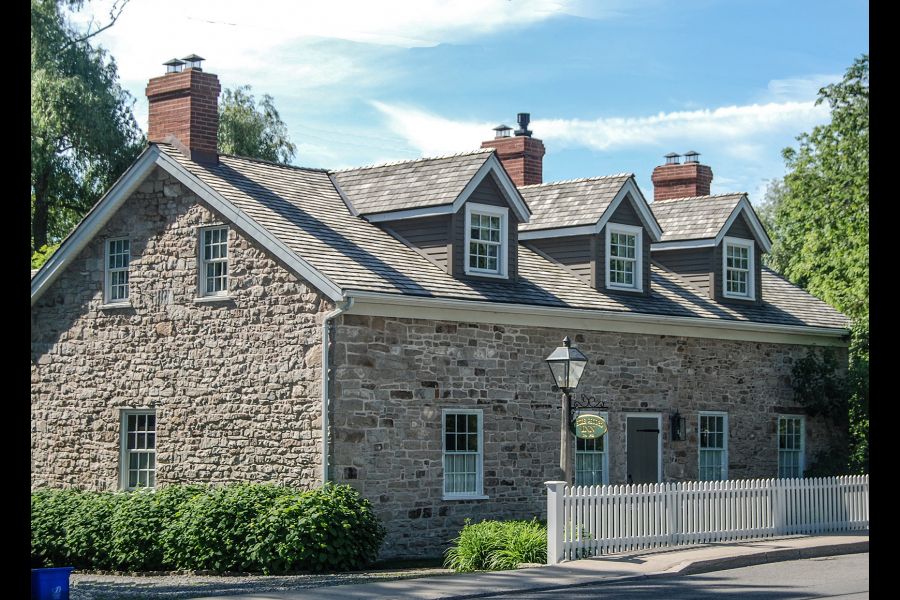When the first Loyalists mustered out of militia regiments like Butler’s Rangers in late 1779 and early 1780, the Crown had not developed any plan for their resettlement.
While it was generally accepted that the government had a duty to these individuals, there was no system in place to evaluate and adjudicate their claims for losses and loyalty.
Perhaps as a stop-gap measure the earliest Loyalists were offered the opportunity to settle as tenants-of-the-Crown; essentially they could build houses, farms and businesses, but the land (and buildings) remained the property of the Crown.
One of the first of these mustered out Loyalists was 54-year-old Peter Secord, who is recorded as having commenced farming in what is now St. Davids in 1780. Within a few years he had constructed a solidly built little stone house. As time and money permitted, he extended his home with an in-line addition to create the facade seen from the street today.
Constructed of whirlpool sandstone that was probably found on the property, the stones were laid in the random method that creates rough courses with non-uniform joints. In appearance, the facade represents a Georgian facade with five bays.
While the middle bay (front door) is not precisely centred as one would normally expect, this slight off-set placement is almost certainly due to the house being constructed in two stages, as are the three chimneys when two would be the norm.
At some point, likely in the early 19th century, the entire house was coated with lime render to both weatherproof and “fancy-up” the rubblestone walls. This render was removed by the current owner who has invested significant energy in the preservation and restoration of the house.
From his earliest days in Niagara, Peter Secord petitioned the Crown for a land grant. Acting in good faith as a tenant-of-the-Crown, Peter developed a successful farm and, in concert with his brother James, developed one of the earliest grist mill operations in Niagara.
Unfortunately, he was not high on the Crown’s priority list and by 1793 he decided to leave Niagara and move to Norfolk County. When his land grants were finally awarded in 1796, he chose to remain in Norfolk and sold the properties to his nephew, David Secord.
While we do not know what saved it from the torch during the War of 1812, it remains today a wonderful glimpse into Loyalist architecture of the 18th century.











